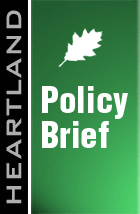Sometimes, it seems as though the debate over school reform takes place in an alternate universe where time passes but nothing really changes. Complaints about the quality of public education were widespread in the 1980s and even in the 1950s and before, and they sound surprisingly similar to those heard today.
Thankfully, new ideas occasionally penetrate the fog of politics. One such idea is the Parent Trigger, the notion that if a majority of parents and guardians of children attending a particular public school sign a petition demanding reform, then the school district must do as the parents ask. Seven states have adopted some version of the Parent Trigger and some 20 states have seen bills introduced.
Parent Trigger laws can vary according to what schools can be the subject of the trigger. Some laws specify that only schools that are “failing” according to some existing or new set of standards can be triggered. The number of schools that can be triggered can be limited to a specific number or be unlimited. The list of reform models that parents can choose from also varies, with some allowing only conversion of public schools into charter schools while others would give parents vouchers or opportunity scholarships to use at any school, public or private, that they choose. Other options include “turnaround” and “transformation,” two bureaucratic options described in the national Race to the Top program.
This Policy Brief presents the rationale for empowering parents with Parent Trigger legislation and then offers design guidelines for parents and elected officials interested in crafting legislation for their city or state. It is a companion piece to two earlier reports on the Parent Trigger also published by The Heartland Institute — read those previous reports here and here — and carries the analysis considerably further by citing many of the bills that have been introduced since they were written. This report also benefitted from a series of Research & Commentary collections produced by Joy Pullmann and available on Heartland’s Web site at TheParentTrigger.com.
Part 1 briefly reviews the literature on the power of parental involvement in education, identifies the obstacles erected by the current school governance and finance system, and explains how creating a competitive educational marketplace would lead to higher student academic achievement and parental satisfaction.
Part 2 describes the Parent Trigger, why it is a powerful new reform strategy, and efforts by parents in California to implement the first-ever Parent Trigger.
Part 3 describes how to design the “trigger” component of Parent Trigger laws. It presents design guidelines in six categories: (1) clear definitions, (2) clear eligibility standards, (3) a specific timeline, (4) parental-majority control, (5) a simple petition process, and (6) explicit restrictions on the expansion of powers.
Part 4 describes four school reform models that could be offered by a Parent Trigger law: closure (public school choice), restart (conversion to a charter school), turnaround or transformation (two reforms described in the national Race to the Top legislation) and universal choice (vouchers or opportunity scholarships). The authors endorse closure, restart, and universal choice, but express skepticism regarding turnaround and transformation.
Part 5 reviews some of the common pitfalls to avoid when drafting a Parent Trigger bill, in particular caps and limitations on the schools that can be triggered and giving public school administrators the power to veto or otherwise override parents’ choices.
Following a brief conclusion, Appendix A presents model legislation for a Parent Trigger that would allow all schools – not just those considered to be “failing” by some bureaucratic definition – to be triggered. It also excludes the ineffective turnaround and transformation options and includes a robust universal choice option. Appendix B provides a model petition based on a sample petition from California. Appendix C provides links to existing Parent Trigger legislation and bills and an extensive bibliography of news articles and research about the Parent Trigger.





